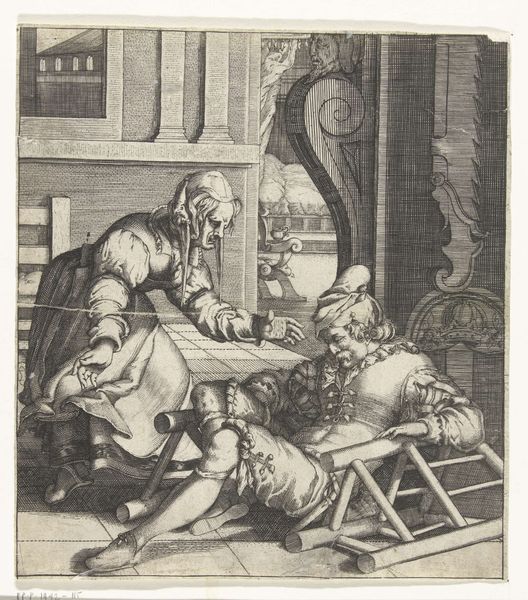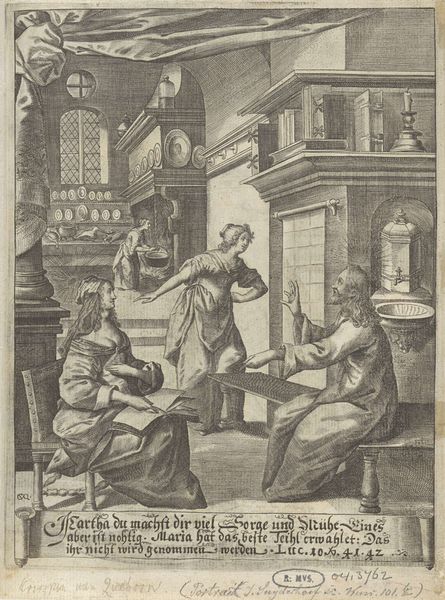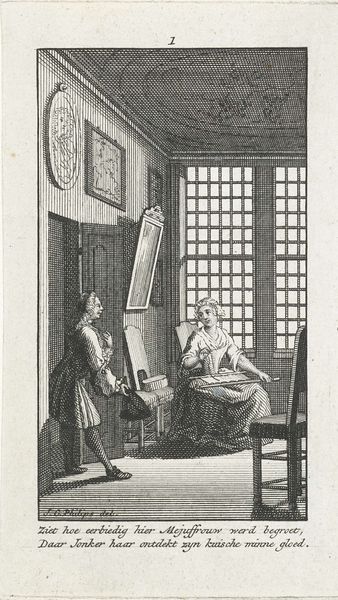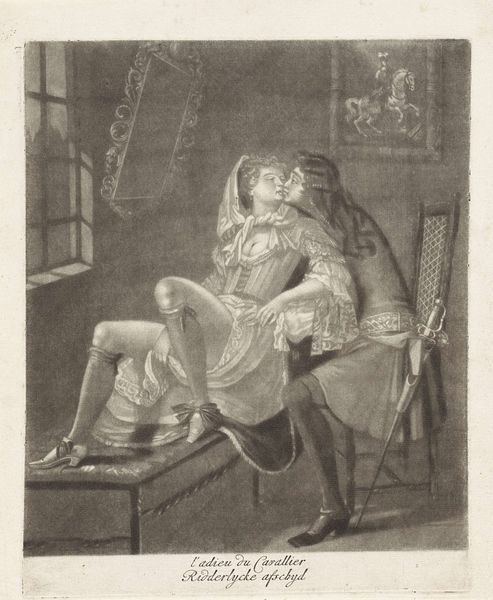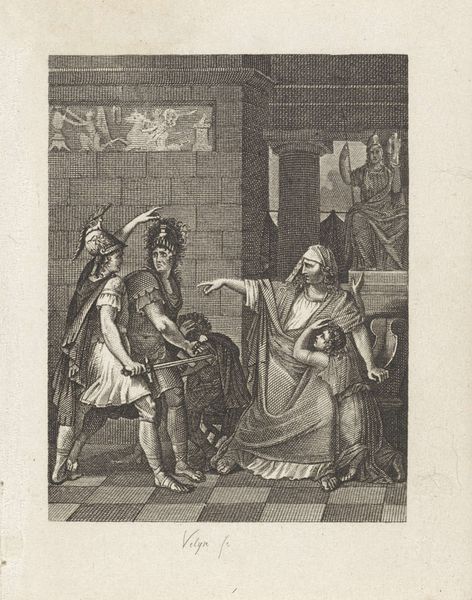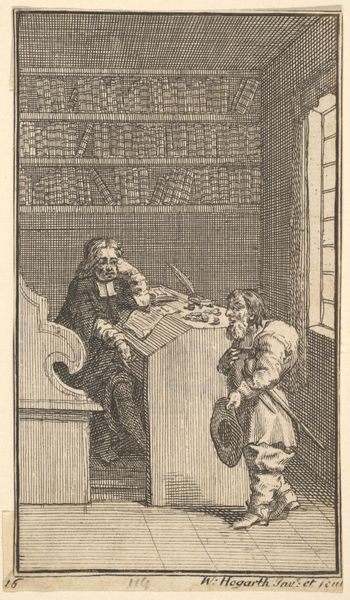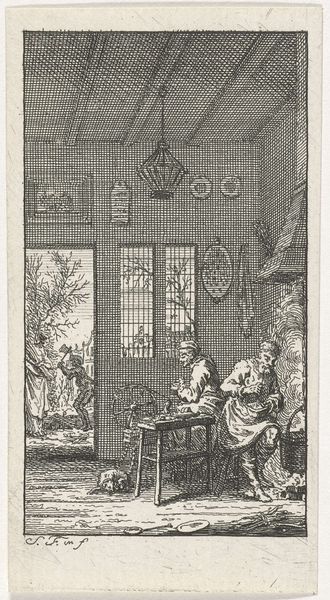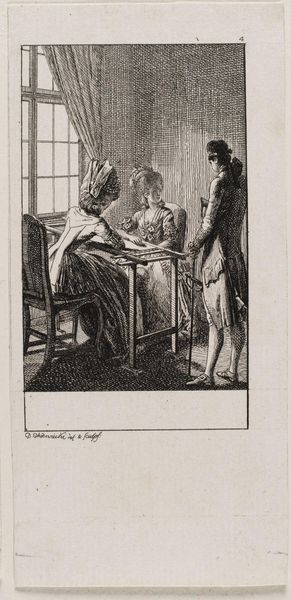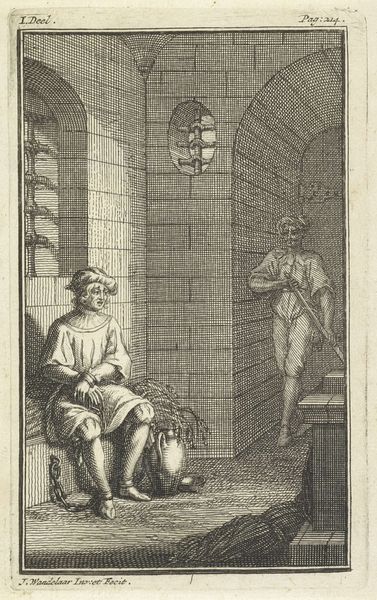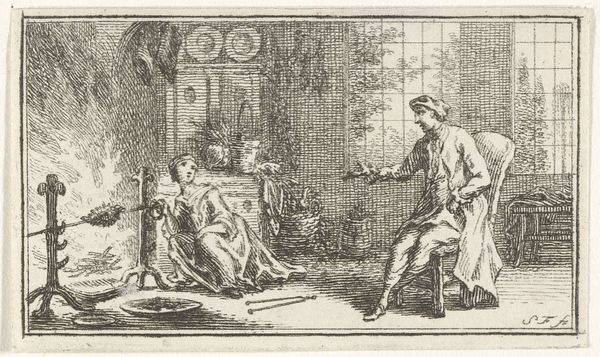
print, engraving
#
baroque
# print
#
perspective
#
figuration
#
line
#
genre-painting
#
history-painting
#
engraving
Dimensions: height 128 mm, width 73 mm
Copyright: Rijks Museum: Open Domain
Editor: So, here we have "Man en vrouw bij een tafel," or "Man and Woman at a Table," an engraving by Abraham Dircksz. Santvoort from 1666. There’s almost a theatrical mood to it, but also a kind of disquiet. The woman looks contemplative, the man… well, overdressed. What catches your eye? How do you interpret this work? Curator: This piece is interesting because it can be viewed as a microcosm of 17th-century societal anxieties and power dynamics. Consider the staging: a woman sits passively by a table with scattered items suggesting leisure and perhaps even consumption. The man, adorned in elaborate garb, seems to be imposing himself into her space. Editor: So you see a power dynamic at play? Curator: Absolutely. Think about gender roles during the Baroque period. Women's autonomy was limited, often confined to domestic spheres. His gesture, his attire – they speak of assumed authority. Even the perspective pushes him forward, minimizing her presence in comparison. This can allude to colonial trade dynamics and their asymmetrical arrangements with subjugated lands during this period. What social structures does that context invoke for you? Editor: I didn't initially see those connections, but knowing the historical backdrop definitely shifts my perspective. The items on the table and his presence really take on another meaning. I had originally thought it to be simply domestic until your insight. Curator: Exactly! Art doesn’t exist in a vacuum. Examining its intersection with broader political and social currents allows us to unpack hidden meanings, revealing layers of historical context. Editor: It definitely reframes how I look at even seemingly simple domestic scenes. I'll be looking at things a bit differently now, seeing beyond the surface. Curator: Precisely. By questioning the narratives presented to us, and acknowledging all the different contextual elements in a composition, we may come closer to a better-informed and more nuanced interpretation.
Comments
No comments
Be the first to comment and join the conversation on the ultimate creative platform.
